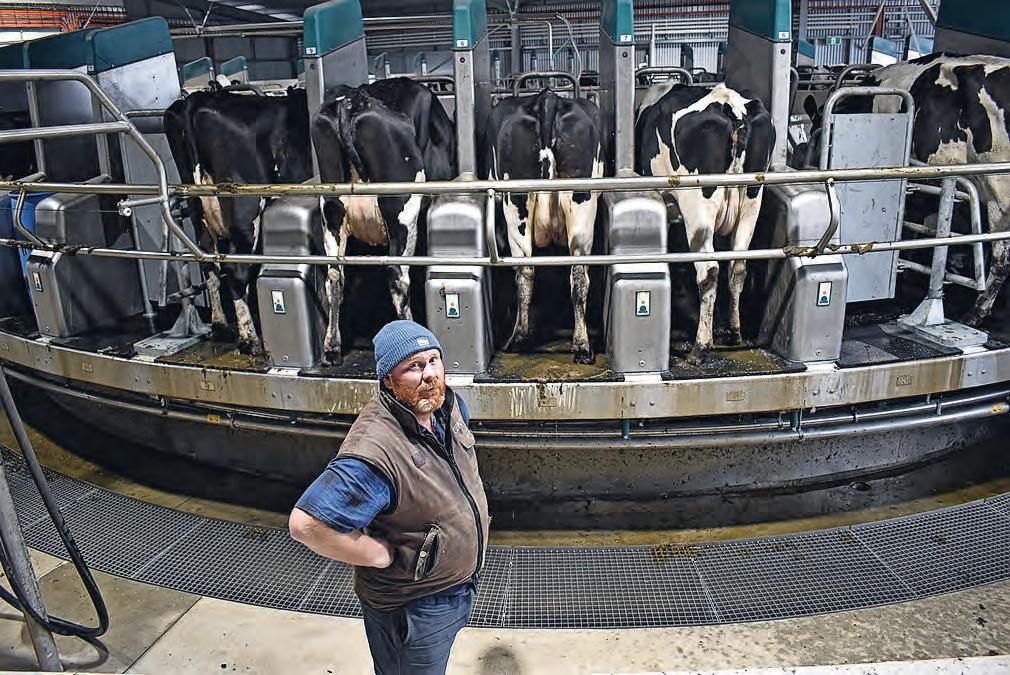
14 minute read
A world first
Mepunga farmer Paul Smith is pleased with the smooth transition to a robotic dairy. A screen near the robotic rotary provides all the data and raises any alerts.
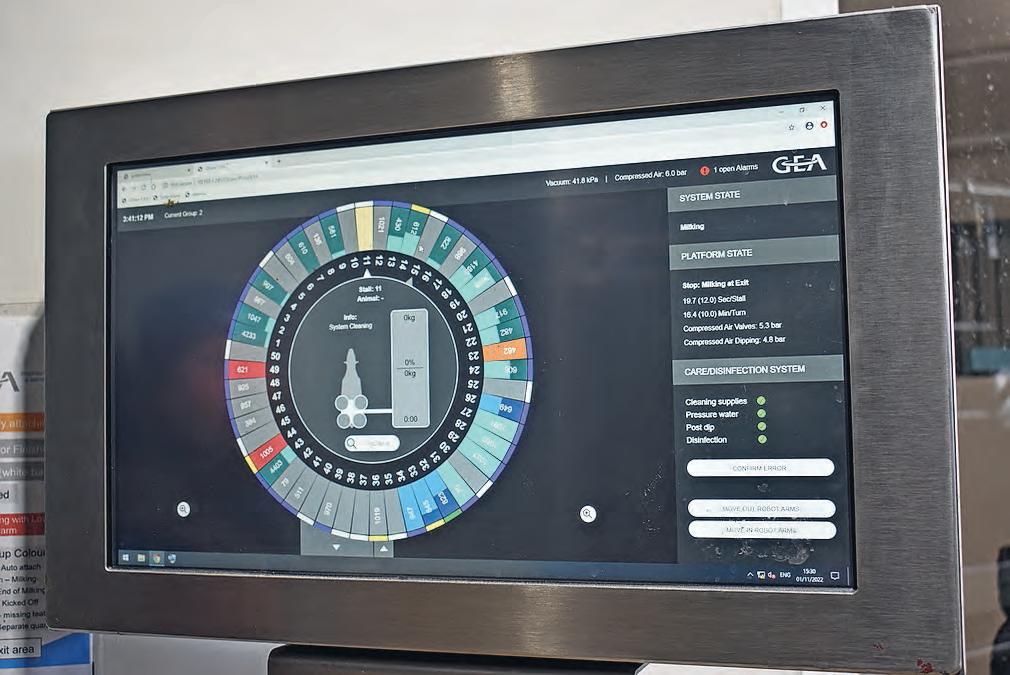
Robot rotary is world-first
BY RICK BAYNE
SOUTH-WEST VICTORIAN farmer Paul Smith has never seen his cows so keen to get into the dairy.
It’s still early days, but it’s a case of “so far, so good” for a new robotic dairy on Paul and Marsha’s farm at Mepunga, and Paul can see long-term time, financial and health benefits.
The new GEA DairyProQ robotic rotary dairy, which went into action mid-October, is the first of its type built in Australia and the first in the world to operate on a pasture-based farming system.
“They’re going on better than the last dairy,” Paul said.
“We only have to use the back gate for the last 50, previously it was the last 200. They’re just filing in.”
Paul said the cows liked the automation.
“Generally, when you’re cupping up on a rotary, you’re standing right where they’re walking in,” he said.
“Because there’s no-one there, they’re just piling on better than I’ve ever seen them walk on a rotary.”
The conversion was an easy process with no major changes to the milking system.
“We just run them on here like we normally would,” Paul said.
“I had a crew of local helpers for the first couple of milkings, which was really great.
“A new dairy is always a challenge and it took us about five-and-a-half hours the first milking but everything went really well.”
Over the first two weeks, milking time has been cut to about 3.5 hours in the morning and three at night. That’s about half-an-hour slower than the old dairy but it’s 10 units shorter — 40 instead of 50.
“It’s probably on-par,” Paul said.
“If we have a good run, we’re milking 240 an hour which is pretty much where we were before. I was hoping for 250 an hour and we’re not far off that already.”
It’s too early to gauge any production changes because most cows are drying off.
“The good news is we haven’t gone down from where we were,” Paul said.
There have been no staff changes as yet but Paul expects two backpacker positions won’t be refilled, leading to long-term savings.
They are milking about 700 Holsteins and the vast majority are settling in well with the robotic system.
“The robots try about five times to attach the cups,” Paul said.
“If they don’t connect, the system sends an alert. We’re milking about 700 and only have to help about 50 with getting a cup on.”
The dairy includes a nearby colour-coded screen showing what’s happening on the platform, including all production, cell count and health information.
“We haven’t had any major teething issues,” Paul said.
“We’re only two weeks in but so far, I’m happy we made the investment.”
Paul and Marsha invested in the new technology following years of research, starting with YouTube videos and followed by lengthy discussions with GEA and farmers who use the system.
The previous rotary dairy was built in 1998 and remained in use during the changeover. The DairyProQ robotic rotary is about 300 metres from the existing dairy.
With the DairyProQ rotary parlour, every milking procedure step is performed inside the teat cup in a fully automated process, including key sensors to constantly analyse and monitor the flow of milk and industrial touchscreens providing thorough insights into the milking process.
DPQ dairies can go up to 80 stalls to milk 600 cows an hour.
Save yourself from hoof hassles Strong, Easy, and Safe. Proven on thousands of farms since 1995. Braked winches, easy access All cow handling tasks Essential for every Cowshed.

“Make it quick, easy, & safe “Make it quick, easy, & safe & staff will happily do hooves.” & staff will happily do hooves.”
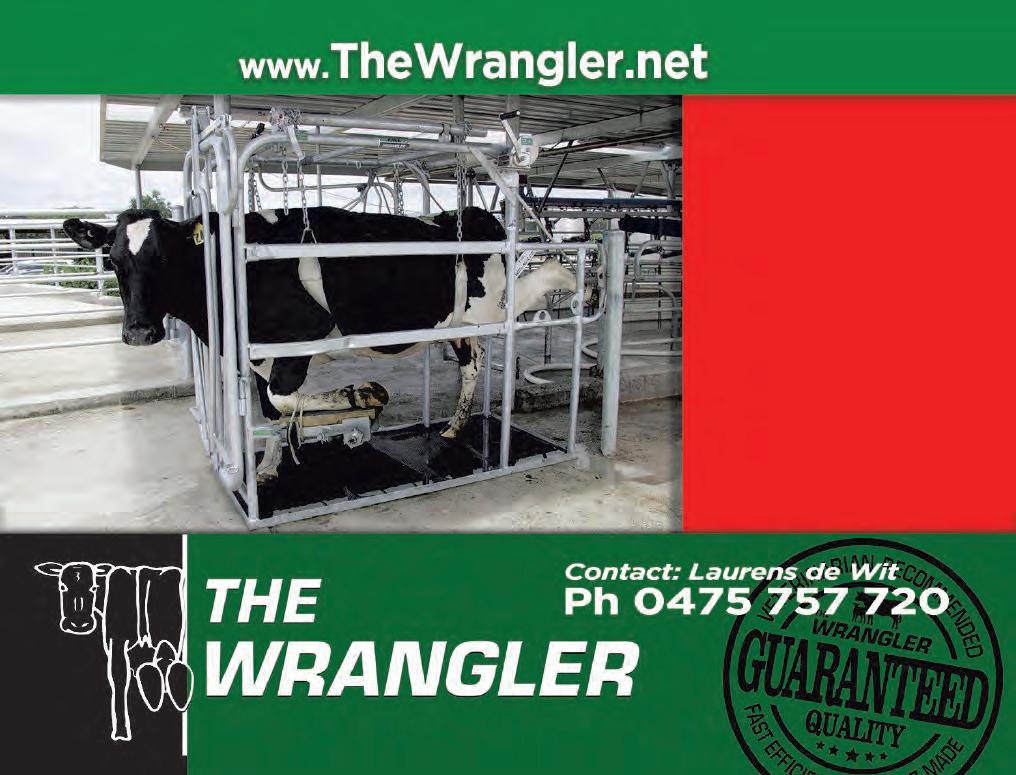
Stock available for direct delivery
The cows are keen to file in and be milked.
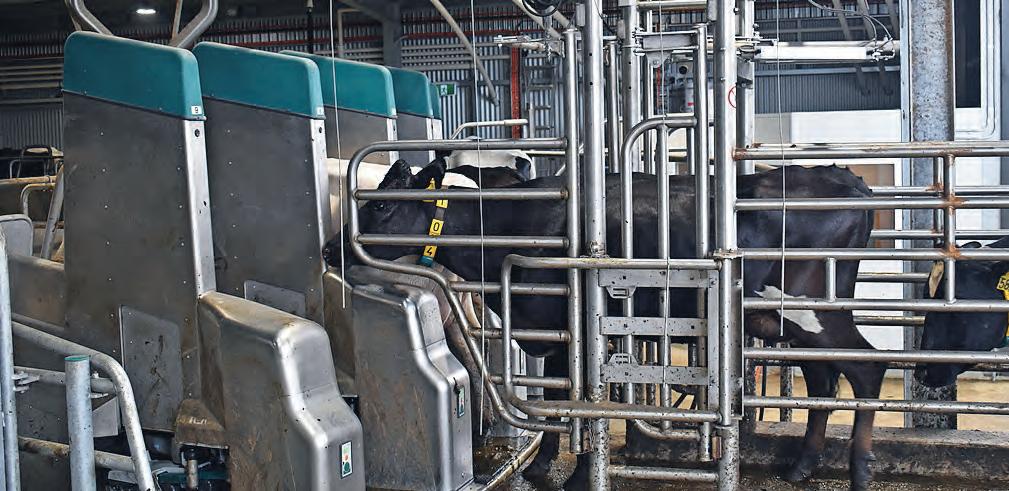
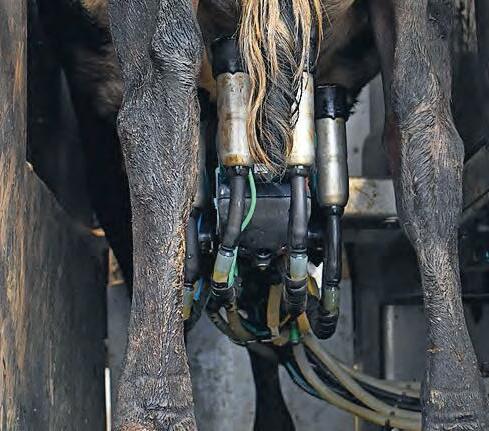
The robots will try five times to attach to a cow and in the rare times they miss, an alert is sent.
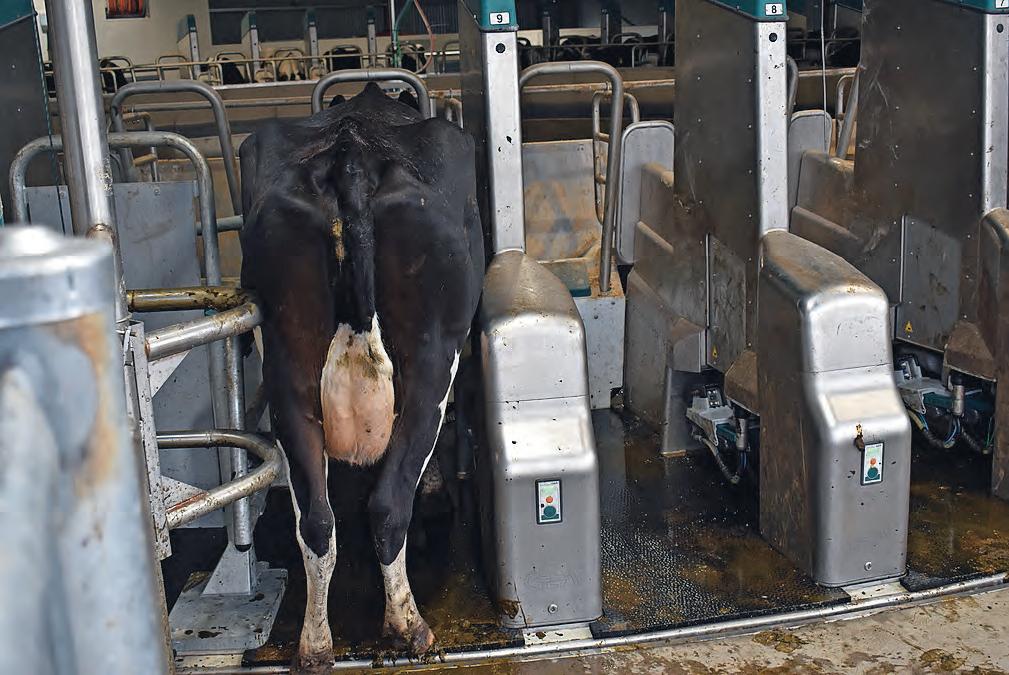
School project goes online
EXCITED STUDENTS from across Victoria were recognised at three online Cows Create Careers presentation days in October and November.
The presentation days celebrated the achievements of students who have completed the innovative Cows Create Careers project, which aims to increase the awareness of dairy industry careers.
To lead by example, the Cows Create Careers project was delivered online for the second half of this year, due to the possible implications of foot and mouth disease.
Students and teachers from schools across Victoria have participated in these high-energy online events, to celebrate their achievements as part of the project.
The fun-filled days saw students participate in industry-based games and the project’s winning teams awarded prizes.
The program manager is Jaydee Events.
Jayedee Events director John Hutchison said it was encouraging to see students so passionate to learn, and connect with, Australia’s vibrant dairy industry.
“The presentation days are a great way to recognise and celebrate both the students’ and teachers’ dedication to the Cows Create Careers project,” he said.
“Each year we continue to be inspired by their enthusiasm for the project.”
During 2022, more than 60 Victorian schools were provided with dairy industry curriculum, at no cost. Students took an online journey through Willbrae Farm where they were introduced to two dairy calves, ‘Bright’ and ‘Future’.
Over five weeks, students found out how to care for the calves and watch them grow through engaging videos. Students also learnt about the environment, technology and machinery used on-farm through quirky activities and competitions.
“Cows Create Careers allows students learn about the wide range of skills, educational pathways and careers in Australia’s dairy industry,” John said.
“It’s extremely encouraging to see the ongoing benefits of the project; not only are the students learning about the diversity of skills required in the industry, but it also directly connects them to their local community.”
Cows Create Careers was established in 2004 with dairy farmers in the Strzelecki Lions Club in Victoria and nine Gippsland schools. It has now grown to more than 230 schools across Australia with more than 1500 students completing the project in 2021.
John said the project’s passionate volunteers were vital to the continued success of the Cows Create Careers project. “Since its inception, Cows Create Careers has gained support from industry, regional development programs, dairy farmers and sponsors across Australia.
“Last year alone 425 passionate volunteers gave 2125 hours of their time across 23 Australian dairying regions.”
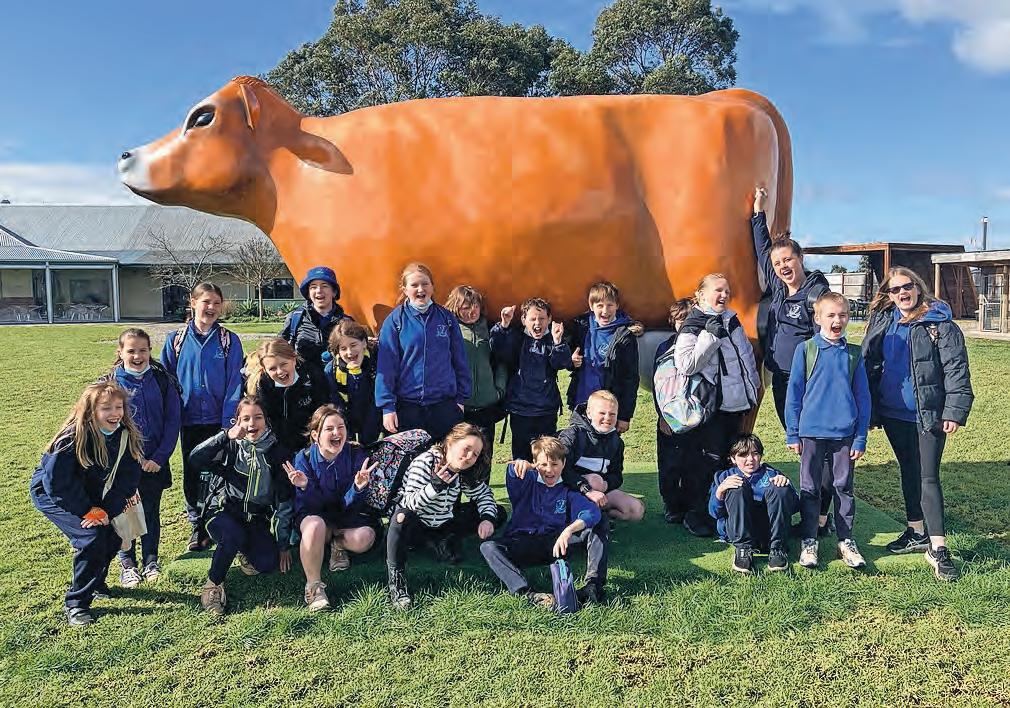
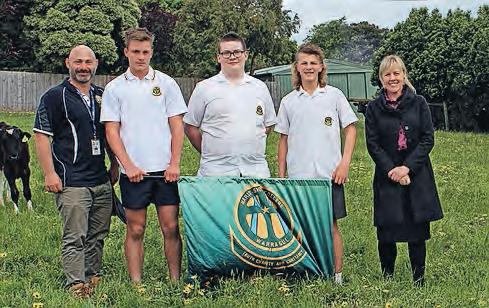
Cows Create Careers students from the Bass Valley Primary School.
Chris Senini (teacher), Riley Senini, Connor Hopley, Charlie Stone and Lisa Harkin (principal) from Warragul’s Marist Sion College, who were the 2022 senior Gippsland region Cows Create Careers program winners.
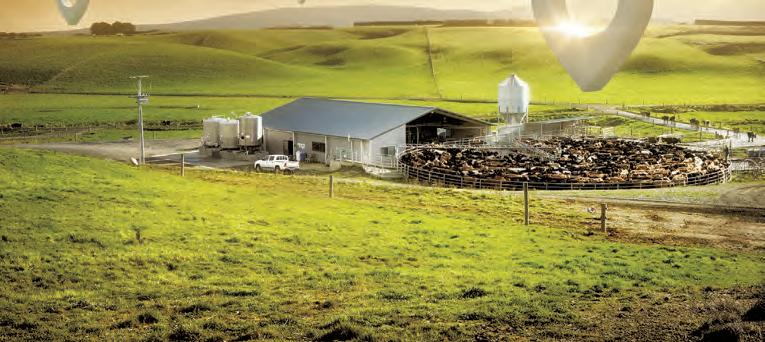
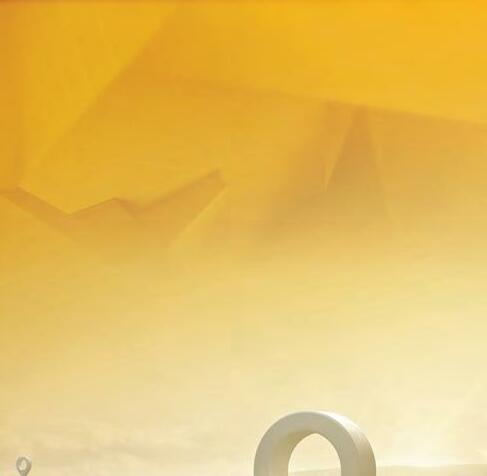
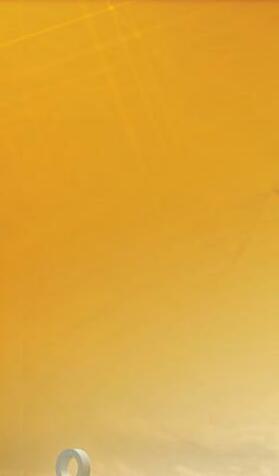
AGMATE RURAL SERVICES 04 29 995 033 G.V. ADVANCED MILKING SERVICES 04 07 525 908
AK DAIRY SERVICES 04 98456799
AM DAIRY SOLUTIONS 02 4647 6766 GIPPY DAIRY CENTRE 03 5622 3516
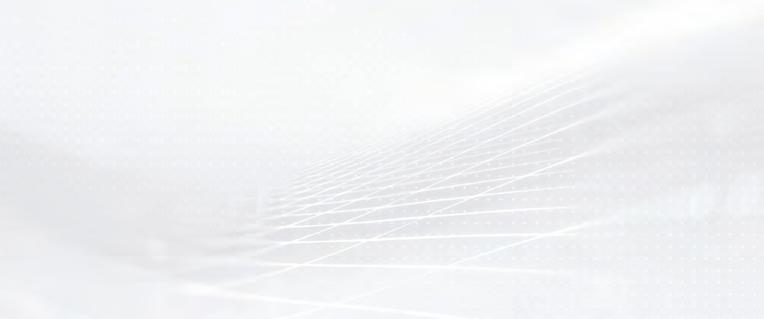
SOUTH WEST DAIRY SERVICES 04 55 737 337
DAIRY MAINTENANCE & INSTALLATION 04 27 530 015 TEKNO DAIRY 04 070 82481
CLEANING UP AGAIN
For the second consecutive year, Lactalis Australia employees have rolled up their sleeves to participate in World Clean Up Day.
Lactalis Australia partnered with local not-for-profit organisation Clean Up Australia to activate clean-ups across its Lidcombe (NSW), Scoresby (Victoria) and Brisbane (Queensland) sites on September 19.
The clean-ups saw 104 Lactalis Australia employees head out into their local communities, gloves on and garbage bags in hand, removing a combined 2208 pieces of waste from the environment.
Forty-two per cent of rubbish collected was soft plastics, with 66 per cent collected from waterways.
During two weeks, from September 12 to 25, Lactalis sites in 42 countries took action to organise or relay local litter collection operations and raise employees’ awareness about the importance of sorting and recycling waste. More than 3300 employees and their families volunteered, and more than 30 tons of waste were collected.
“The state of the environment means people are expecting their employers — and brands — to show leadership and be true stewards for the future,” Clean Up Australia chair Pip Kiernan said.
“It takes a collaborative effort to solve our waste challenges and we’re thrilled to partner with organisations like Lactalis Australia.
“When we take time to connect with the environment and clean it up, we become more conscious of our environmental footprint.”
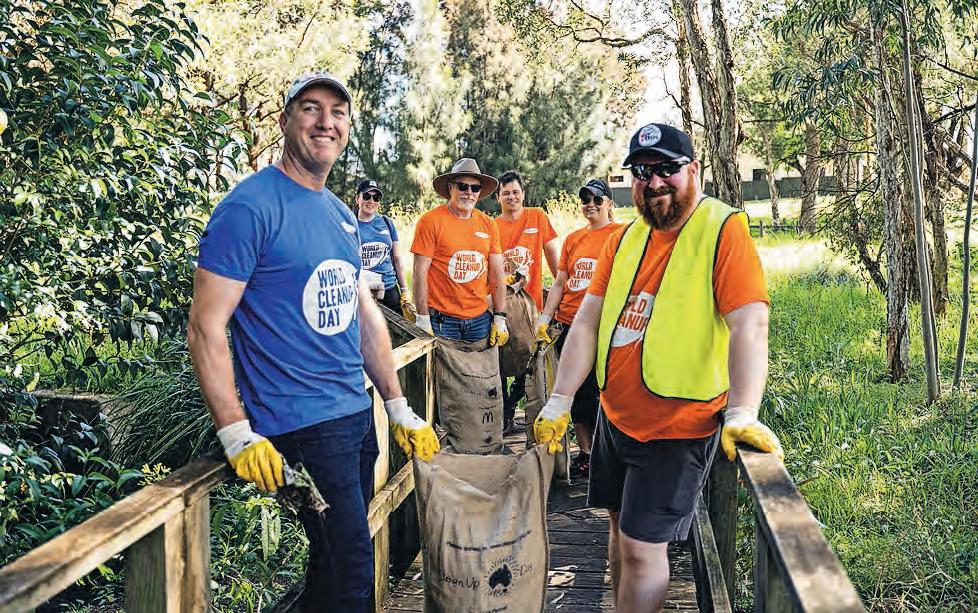
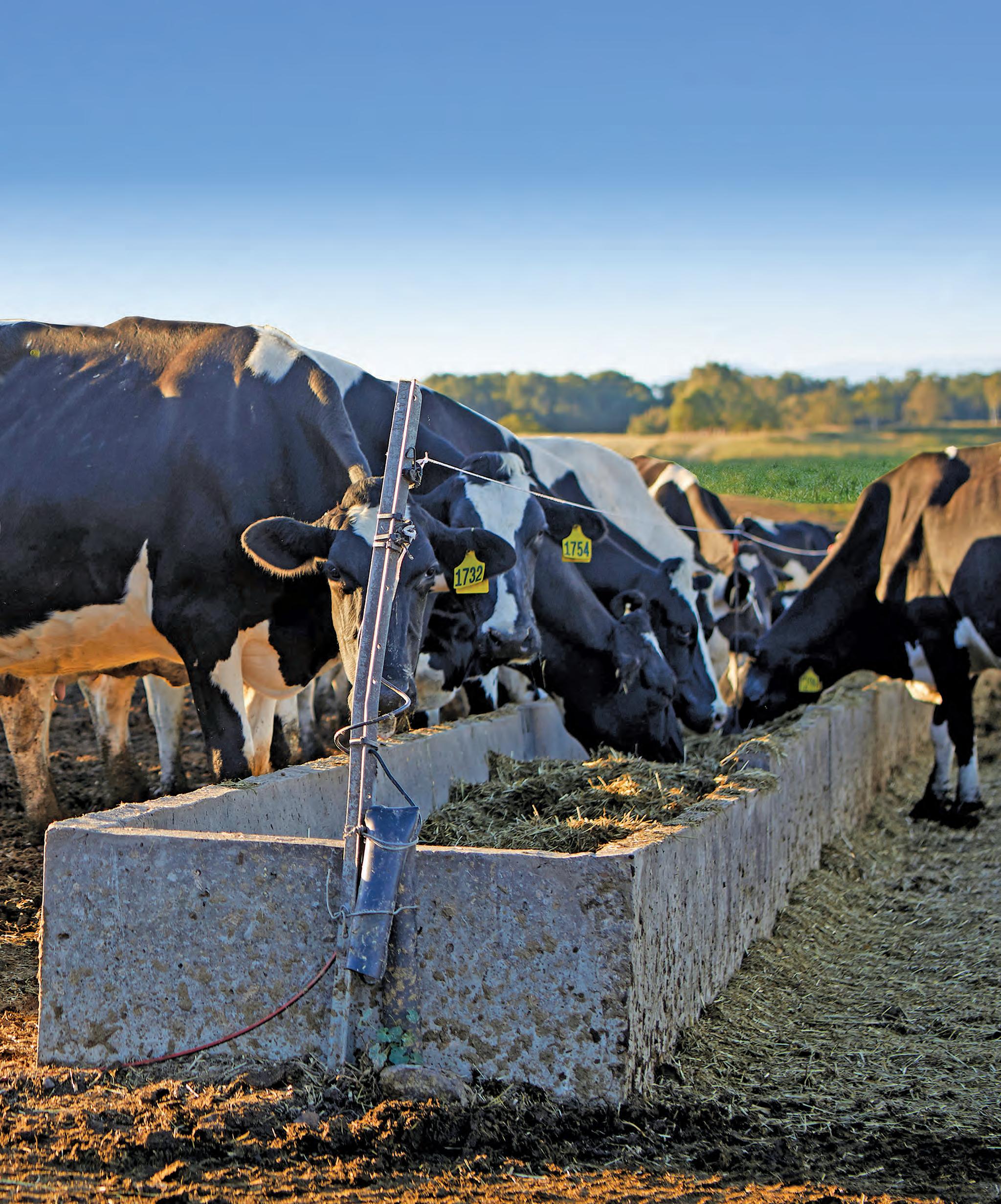
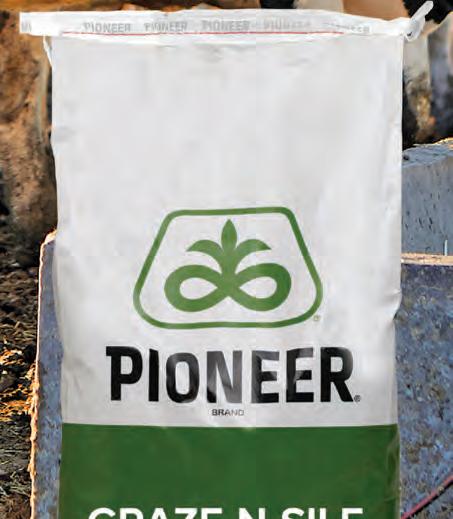


Farms are in the classroom
VIRTUAL REALITY is being used to bring the paddock to schoolchildren, many of whom have never been on a farm, met a farmer or know where milk, butter, cheese and yoghurt come from.
Dairy Australia hopes to bridge the gap between dairy farming and urban primary school students by bringing on-farm experiences into the classroom to help them understand how dairy farmers work to supply nutritious, sustainable food to fuel a healthier Australia.
Dairy Australia’s Virtual Reality initiative was launched on November 15 at St John’s Grammar Primary School in Belair, in Adelaide, with children in the classroom being taken through the entire process of making dairy foods, from the paddock and milking shed, to packing and even cheesemaking.
Schools throughout Australia will be able to download the content.
Dairy Australia spokesperson Jess Phillips said educating the next generation about the dairy industry and the importance of dairy foods for overall health and wellbeing was critical.
“We know young Australians are more conscious of what they are consuming than ever before,” she said.
“However, an alarming 60 per cent of school-aged children are not getting enough dairy during a critical time for bone growth.
“Through the use of virtual reality, this new experience allows students to learn in an engaging way, that is easily accessible to educators — and helps students connect with the food they consume each day.”
The virtual reality program supports Dairy Australia’s commitment to working with schools and its popular curriculum program Picasso Cows and Discover Dairy resources.
South Australian dairy farmer Bec Walmsley, whose farm features in the virtual reality program, said as consumer interest and food production transparency continued to grow, there was increasing need to connect the farming community with wider Australia.
“Through educating students on the manufacturing process, from milking to final consumer product, we hope to inspire young Australians in making healthy food choices, to better their health and support the industry,” she said.
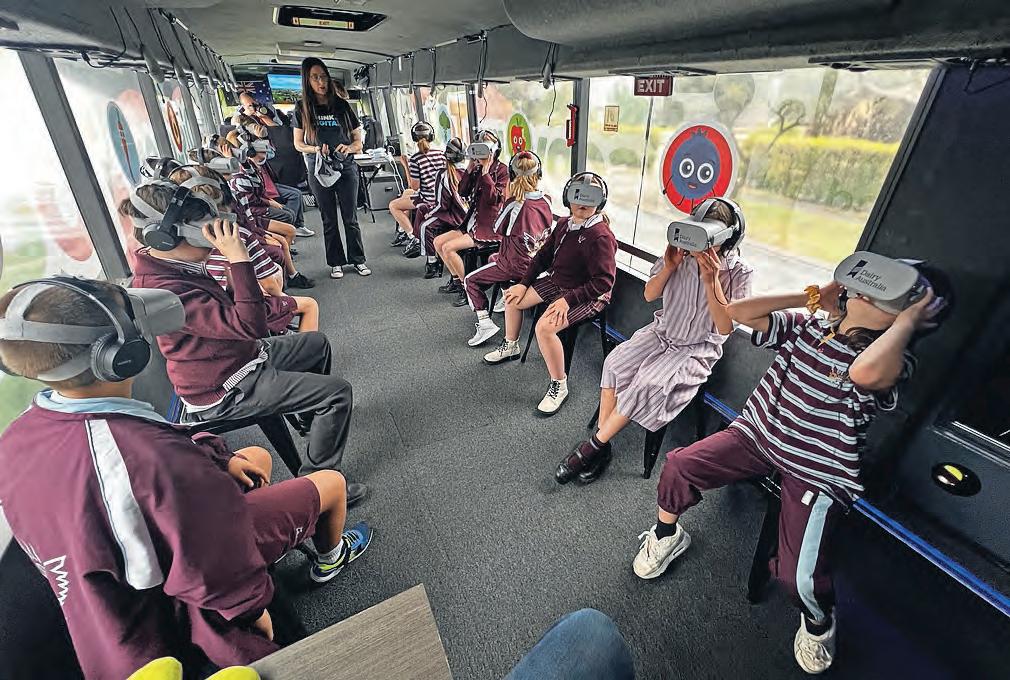
Students from St John’s Grammar Primary School test the new virtual reality program designed to help kids understand where their food comes from. Bec Walmsley (pictured with husband Rob and their daughter Tahlia) features in the virtual reality program.
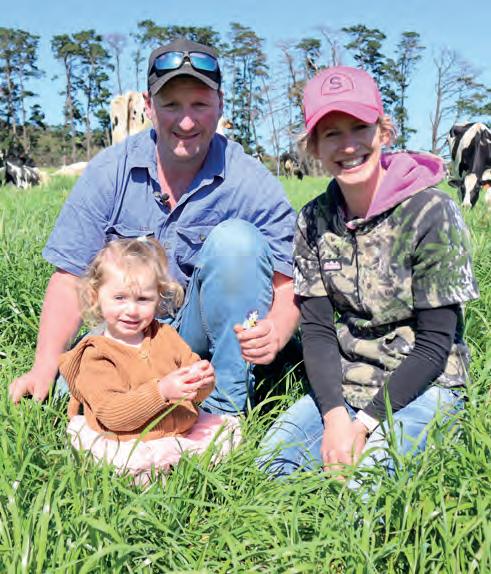
— Dairy Australia spokesperson Jess Phillips
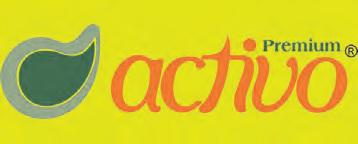
Thinking of better fat and protein % % in your milk?
Contact Ajay Agarwal – 0455 773 707 ajay.agarwal@ew-nutrition.com
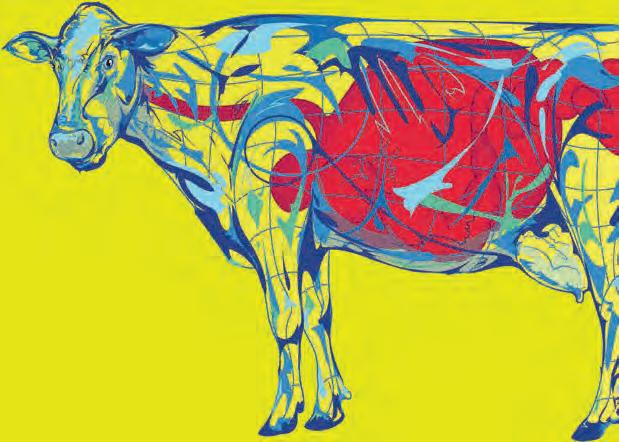
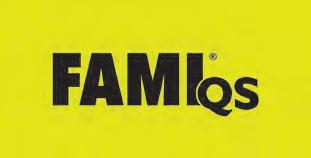
Partners building resilience
In the wake of recent natural disasters, animal health business Elanco has entered an initial three-year financial partnership with national charity Rural Aid.
Elanco will support Rural Aid financially through annual donations and donation matching, team volunteering hours and Elanco animal health product donations, as well as helping raise awareness of the services provided by Rural Aid.
“Disaster relief is so much more than waiting for the waters to subside,” Rural Aid CEO John Warlters said.
“While response and recovery are key, preparedness and prevention strategies are where real change occurs.
“It’s the ongoing support of businesses like Elanco that allows us to plan and invest in new thinking to create meaningful change.
“The short term is survival, the long term is where we set Australia up as a resilient nation; it’s where we thrive.”
Elanco general manager Hendrik Van Der Walt said they were proud to help the organisation provide response, recovery, prevention and preparedness support for rural communities battling the effects of natural disasters.
“In our business, we focus on holistic, longterm animal health solutions,” he said.
“So, it was important for us to partner with an organisation that provides both immediate support for those in need, as well as investing in real, long-term change.
“Rural Aid knows the importance of being on the ground when natural disaster strikes, and they’re often the only lifeline for many of our brothers and sisters in rural and regional communities.
“And we’re proud to be right there with them.” Farmers are encouraged to register with the following: faa.ruralaid.org.au to streamline assistance in times of disaster; and farmarmy.com.au to match required jobs with skilled volunteers

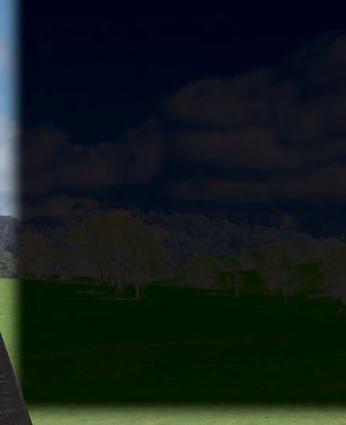
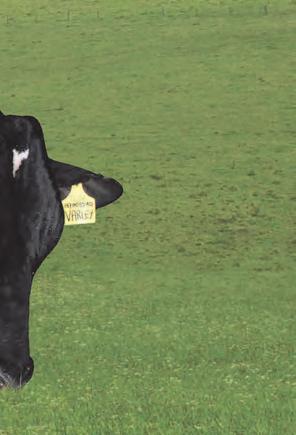
TUBS ARE KIND TO OCEAN
BROWNES’ YOGHURT tubs will now be made from ocean-bound plastic.
Ocean-bound plastic is described as plastic that’s found within 50 kilometres of Australia’s coastline.
In addition to using ocean-bound plastic, the Western Australian business’ new yoghurt tubs will also be fully recyclable by kerbside waste management operators.
The initiative will be an important step in preventing ocean waste, with projections that by 2050 the world’s oceans will carry more plastic than fish (by weight).
“Brownes Dairy is showing our commitment to sustainability through action,” Brownes Dairy CEO Natalie SarichDayton said.
“We were first to introduce Australia’s most sustainable milk cartons and we wanted to push the envelope again by using recyclable ocean-bound plastic in our yoghurt tubs.”
Brownes has partnered with companies including Heng Hiap Industries and PakPot, which are certified by Zero Plastic Oceans, which is an NGO dedicated to addressing plastic pollution.
“Working with certified partners not only prevents plastic waste from ending up in the ocean, it also creates employment opportunities for underprivileged coastal communities,” Ms SarichDayton said.
By switching to ocean-bound plastic yoghurt tubs, about 2.7 million virgin plastic tubs a year will no longer be created.
In addition to the sustainable yoghurt tubs, Brownes is also transitioning the CHILL 750ml Flavoured Milk bottle range to 100 per cent recycled plastic.
Studies suggest 90 per cent of Australian consumers are concerned about sustainability, with all age segments having the view that businesses and brands should be most responsible for the impact on the environment.
As part of its sustainability focus, Brownes has also partnered with Trillion Trees, an environmental replenishment not-for-profit organisation, to contribute to the Trillion Trees Challenge.
The organisation has been active since 1979 in Western Australia and has planted close to 15 million native trees.
Since 2016, Brownes has also been an active signatory of the Australian Packaging Covenant Organisation (APCO), which is a packaging value chain that collaborates to keep packaging materials out of landfill and retains the maximum value of the materials, energy and labour within the local economy.
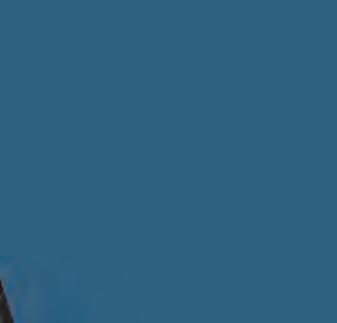
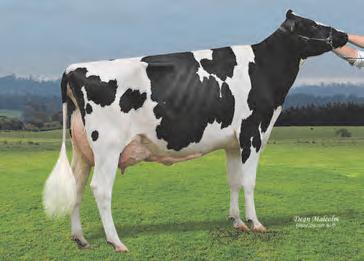
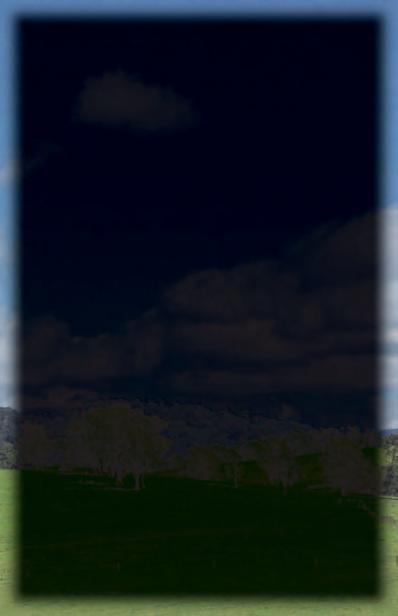
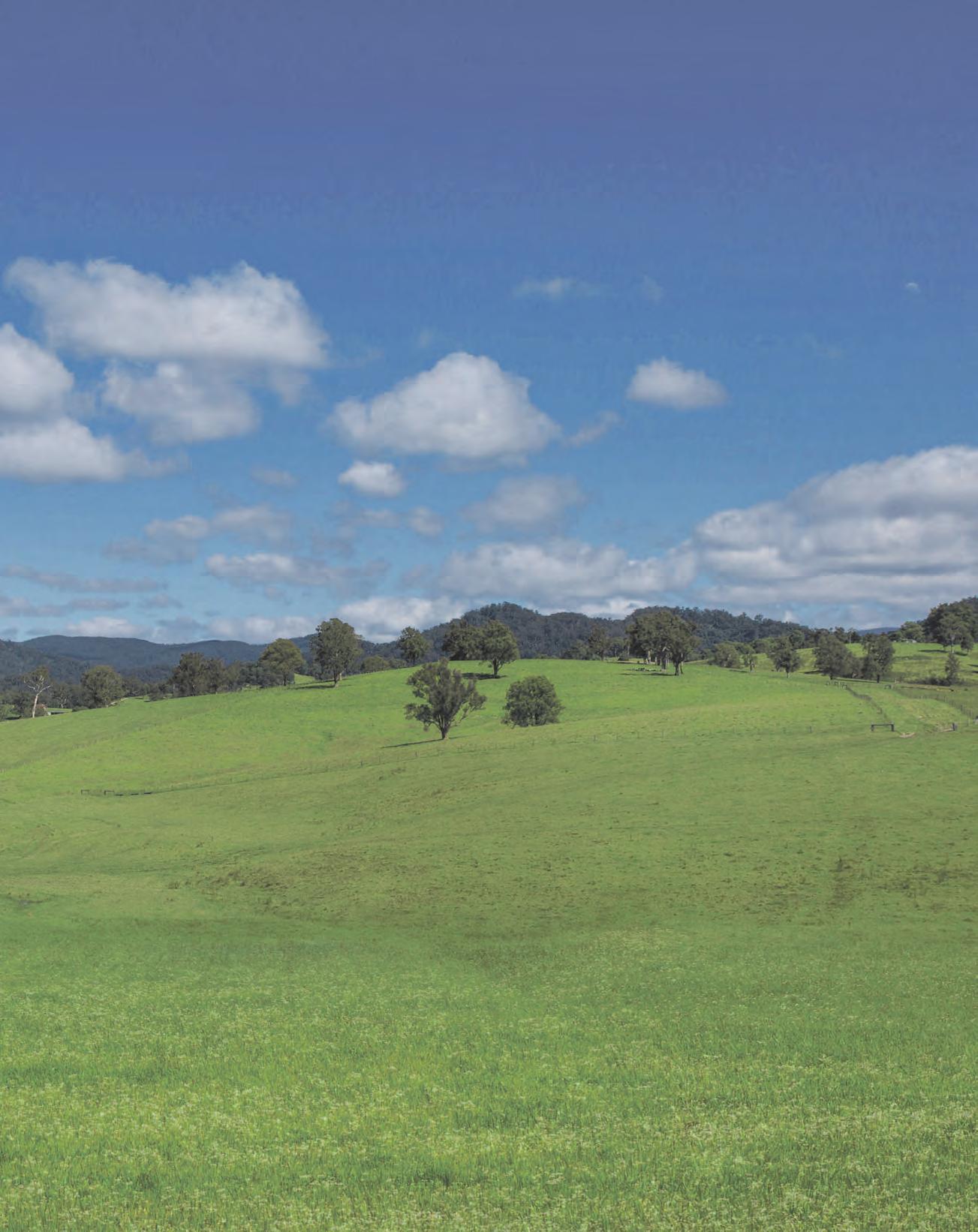
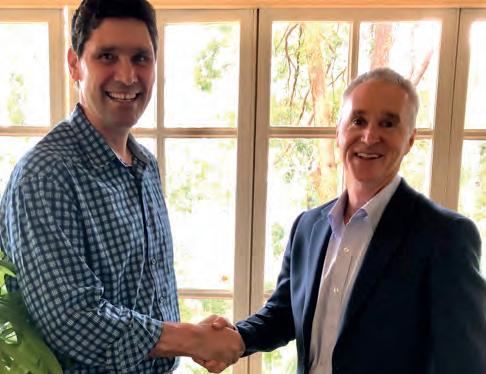
Elanco’s Hendrik Van Der Walt and Rural Aid’s John Warlters celebrate their partnership.

THE NEXT GENERATION
from a two-time Master Breeder herd
CARENDA VARLEY Pemberton x Superhero
SISTER TO VARLEY’S DAM, CARENDA COLT45 VERENE EX90
BPI + 491 | HWI +452 | C/Ease +104 Type +110 | Mammary +110 | A22

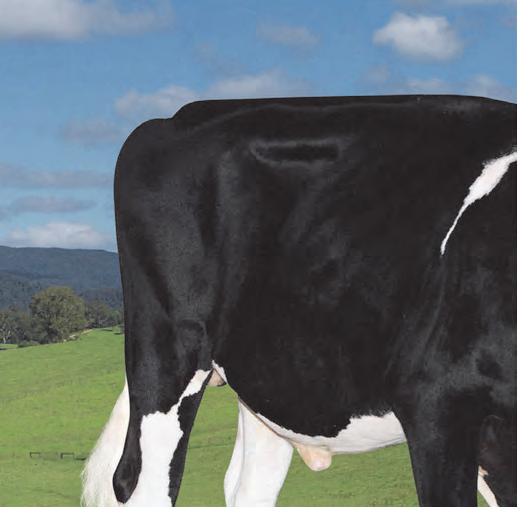
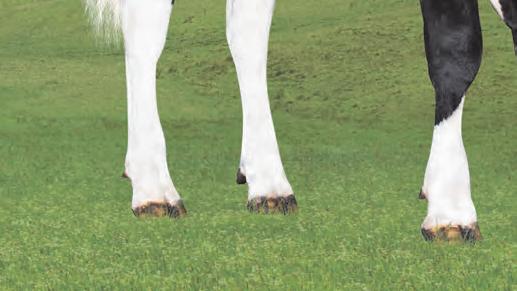
Carenda Ella Vanish EX4E
Carenda Rudolph Venice VG87
Carenda Igniter Verna EX90
Carenda Reginald Verra VG88
Carenda Superhero Verlo GP84 2yrs
Carenda VARLEY
Positioned in the TOP 1% of the breed for BPI, Type and Udder rankings on the Good Bulls Guide following the August 2022 ABV release. Bred by two-times Master Breeder, Carenda Farms in Western Australia, VARLEY descends from one of the leading cow families amongst the Holstein breed. Talk to your Genetics Australia representative today about securing this bull for your upcoming mating’s.



